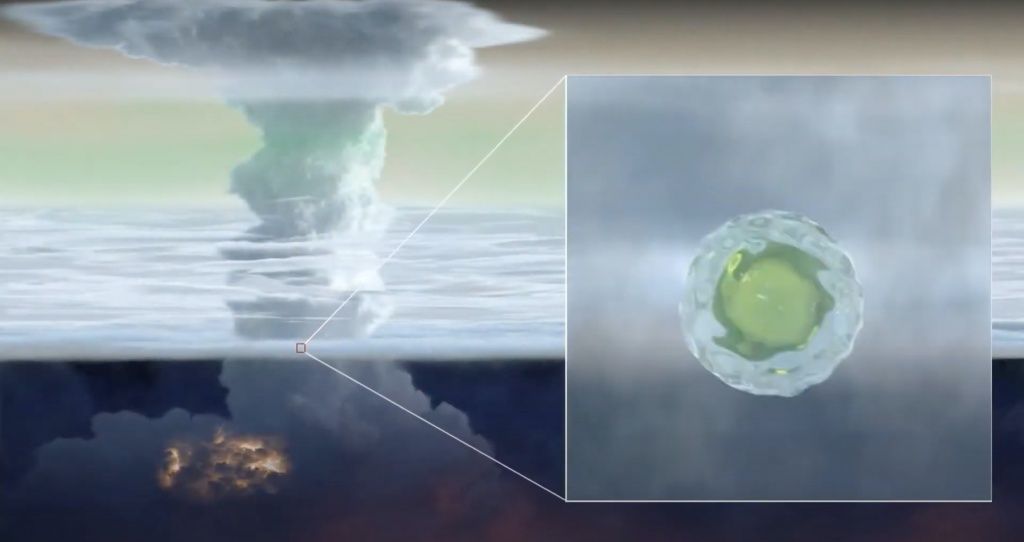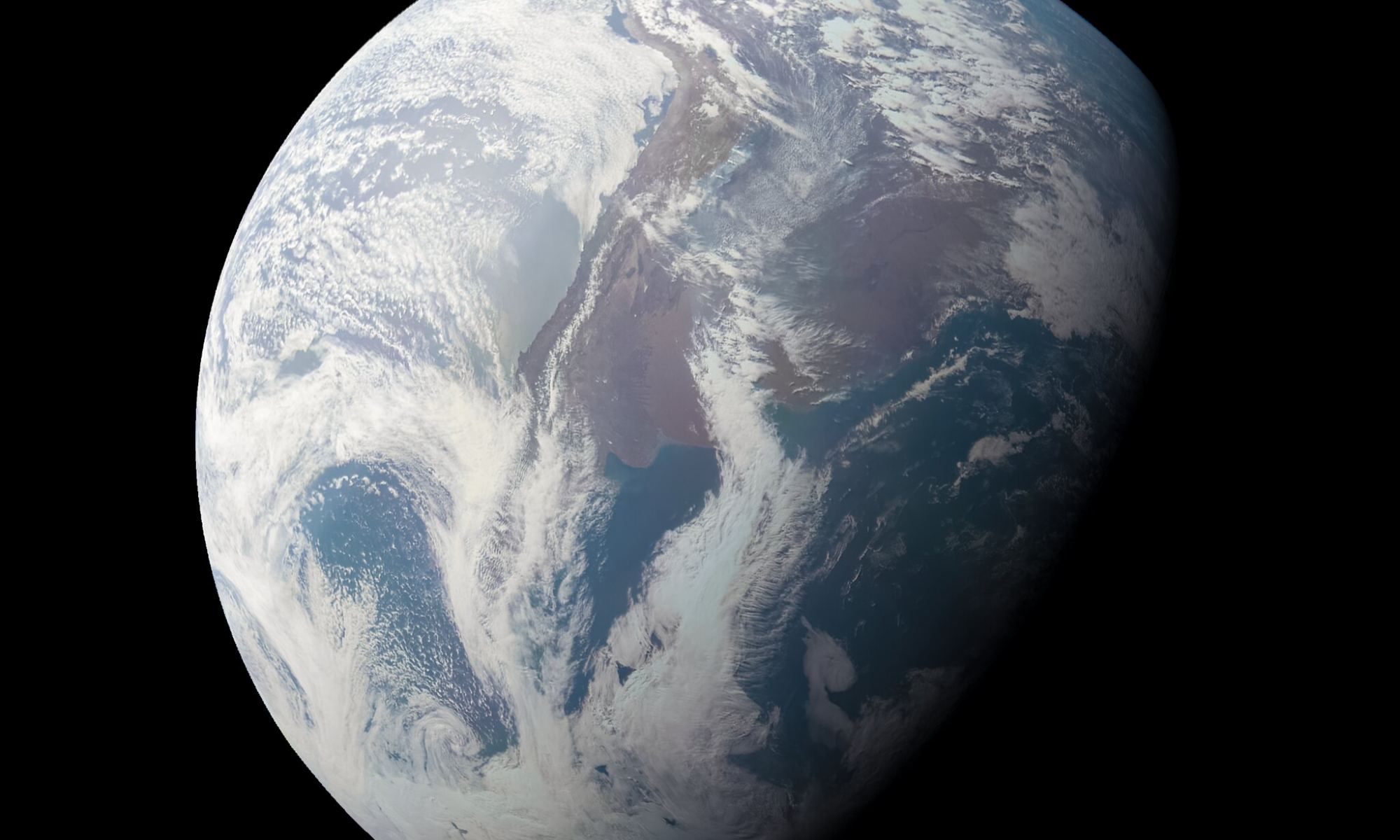Jupiter’s atmosphere has plenty of distinct features, including lightning and the Great Red Spot. But the underlying processes that drive these features are less well understood, as the physics of the gases that make up Jupiter’s atmosphere is complicated. A team of scientists from all over the globe has found a familiar process in all the chaos, though. They think a process that happens here on Earth might be happening on a grander scale at Jupiter.
Continue reading “With no Solid Surface, the Atmosphere of Jupiter Behaves Quite Differently Than Earth”Giant Balls of Mush Made From Ammonia and Water Form in the Atmospheres of Uranus and Neptune
One advantage to planetary science is that insights from one planet could explain phenomena on another. We understand Venus’ greenhouse gas effect from our own experience on the Earth, and Jupiter and Saturn share some characteristics. But Jupiter also provides insight into other, farther out systems, such as Uranus and Neptune. Now, a discovery from a spacecraft orbiting Jupiter might have solved a long-standing mystery about Uranus and Neptune – where has all the ammonia gone?
Continue reading “Giant Balls of Mush Made From Ammonia and Water Form in the Atmospheres of Uranus and Neptune”Juno Captured This Image of Earth on its Way Out to Jupiter Back in 2013
Since the Juno spacecraft has been in orbit around Jupiter for nearly five years — since July 4, 2016 — you may have forgotten about that time back in 2013 Juno flew past Earth. The spacecraft needed a little extra boost to reach Jupiter, so it used Earth for a gravity assist. Image editor Kevin Gill reminded us of that flyby with some stunning newly processed images of Earth, taken by the JunoCam, the “citizen science” camera on board. Pale blue dot indeed!
Continue reading “Juno Captured This Image of Earth on its Way Out to Jupiter Back in 2013”With its New Extension, Juno is Going to be Visiting Jupiter’s Moons
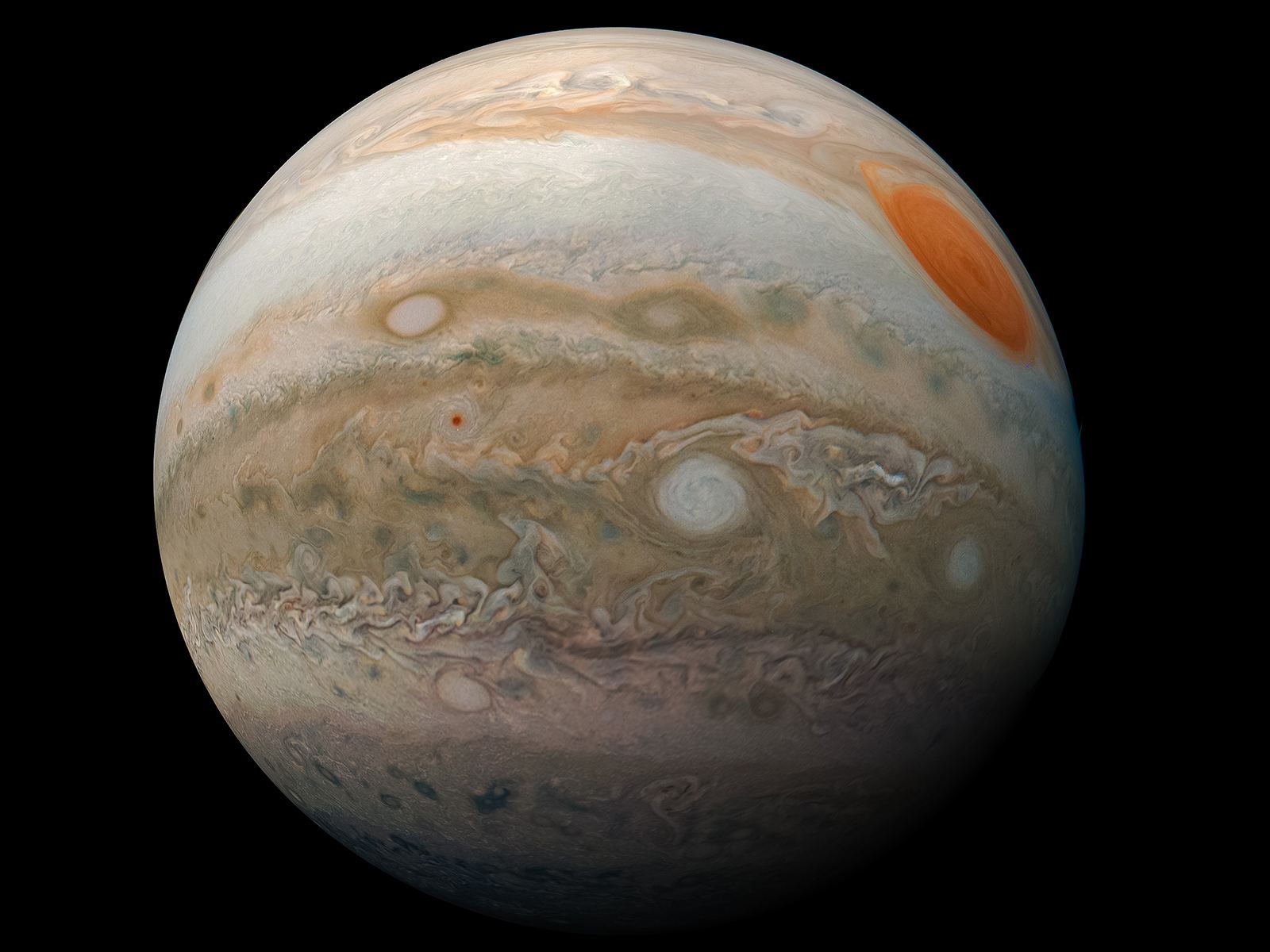
The Juno mission to Jupiter has been extended to September 2025 – or however long the spacecraft can keep operating around Jupiter.
While Juno has so far focused its attention on the giant planet alone, the mission extension will include observations of Jupiter’s rings and large moons, with targeted observations and close flybys planned of the moons Ganymede, Europa, and Io.
This will be the first close flybys of these moons since the Galileo mission in 1995-2003.
Continue reading “With its New Extension, Juno is Going to be Visiting Jupiter’s Moons”Are the Clouds of Jupiter Haunted?
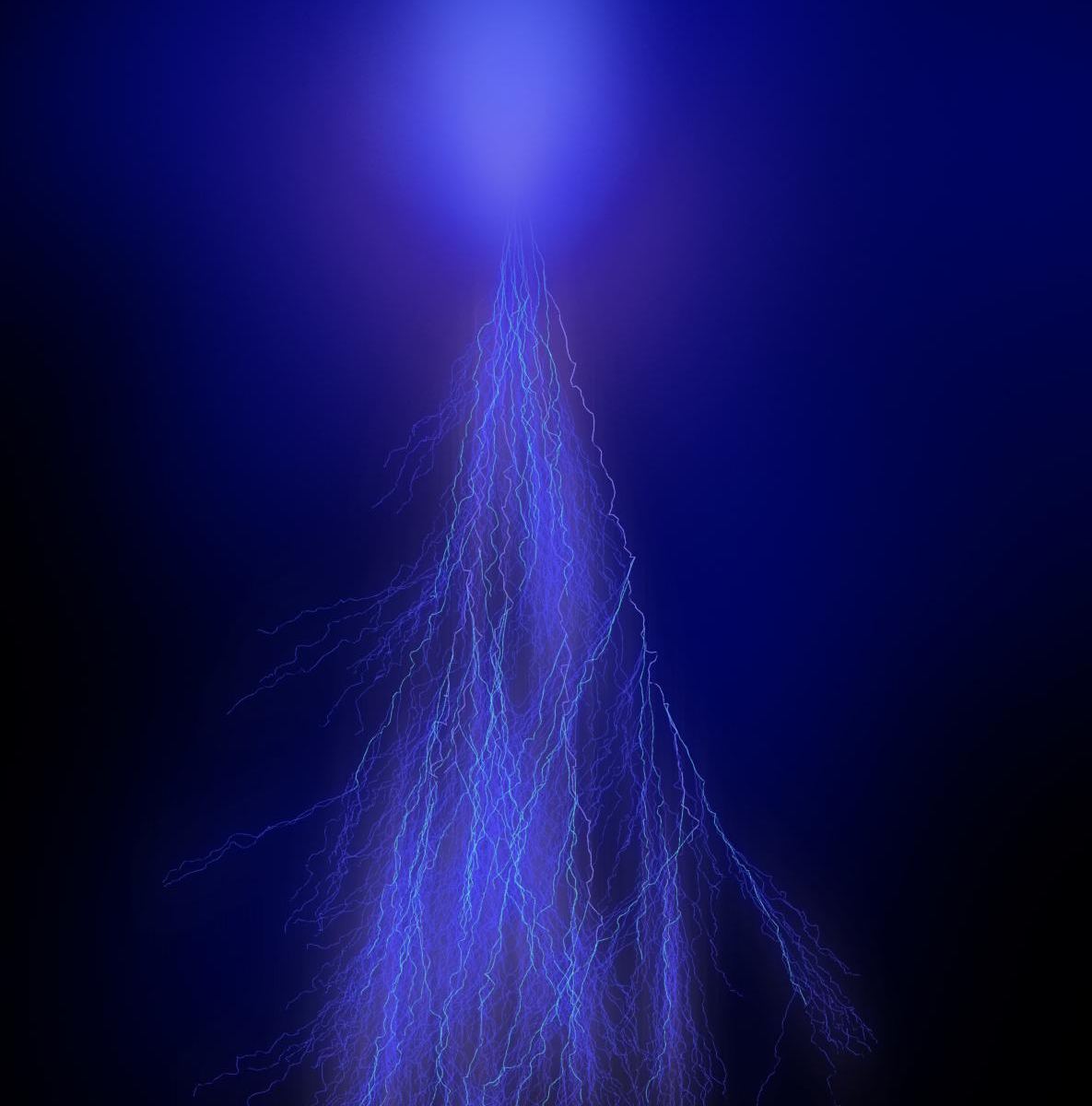
Are spirits amongst the clouds of Jupiter? The answer might be yes! A recent publication in the Journal of Geophysical Research: Planets has identified what appear to be “Sprites” in the Jovian Atmosphere.
In European Folklore, ‘Sprites’ (derived from Latin ‘spiritus’ or spirit) were elemental and ethereal beings visiting Earth. The term is fitting for “lightning sprites”, a natural meteorological phenomenon with many eye-witness testimonies but not captured on camera until 1989. Created by lightning discharges in Earth’s atmosphere, sprites are part of larger family of phenomena called TLE’s, or “Transient Luminous Events”, that last for only fractions of a second.
Continue reading “Are the Clouds of Jupiter Haunted?”Simulation Helps Explain Saturn’s Mysterious Hexagon

A new study of the mysterious hexagon-shaped storm at Saturn’s north pole suggests this phenomenon is actually the result of activity occurring across the entire planet.
Continue reading “Simulation Helps Explain Saturn’s Mysterious Hexagon”See a 360 Degree Juno-Eye View of Jupiter During an Io Eclipse
Yesterday, we posted some incredible photos from the Juno Probe’s 29th flyby of Jupiter. Juno is in a highly elliptical orbit. It buzzes the planet at an altitude of 4,200km and then sweeps out to 8.1 million. Completing this circuit every 53 days, Juno only spends 2 hours within close proximity to Jupiter reducing the probe’s exposure to harmful radiation of high energy particles accelerated by Jupiter’s magnetic field.
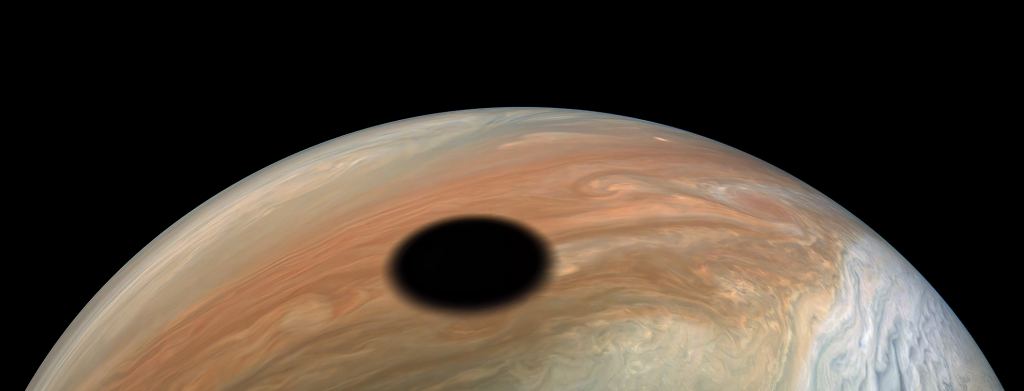
Here’s Jupiter from Juno’s Latest Flyby
Jupiter.
Most massive planet in the solar system – twice that of all the other planets combined. This giant world formed from the same cloud of dust and gas that became our Sun and the rest of the planets. But Jupiter was the first-born of our planetary family. As the first planet, Jupiter’s massive gravitational field likely shaped the rest of the entire solar system. Jupiter could’ve played a role in where all the planets aligned in their orbits around the Sun…or didn’t as the asteroid belt is a vast region which could’ve been occupied by another planet were it not for Jupiter’s gravity. Gas giants like Jupiter can also hurl entire planets out of their solar systems, or themselves spiral into their stars. Saturn’s formation several million years later probably spared Jupiter this fate. Jupiter may also act as a “comet catcher.” Comets and asteroids which could otherwise fall toward the inner solar system and strike the rocky worlds like Earth are captured by Jupiter’s gravitational field instead and ultimately plunge into Jupiter’s clouds. But at other times in Earth’s history, Jupiter may have had the opposite effect, hurling asteroids in our direction – typically a bad thing but may have also resulted in water-rich rocks coming to Earth that led to the blue planet we know of today.
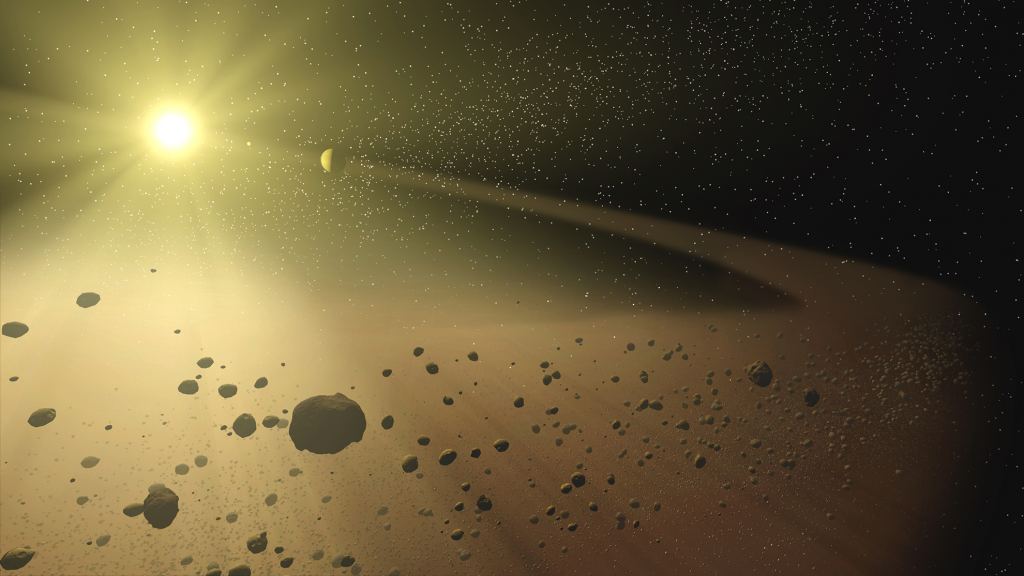
Another Beautiful Image of Jupiter from Juno During a Flyby. Great Work by Gerald Eichstadt and Sean Doran
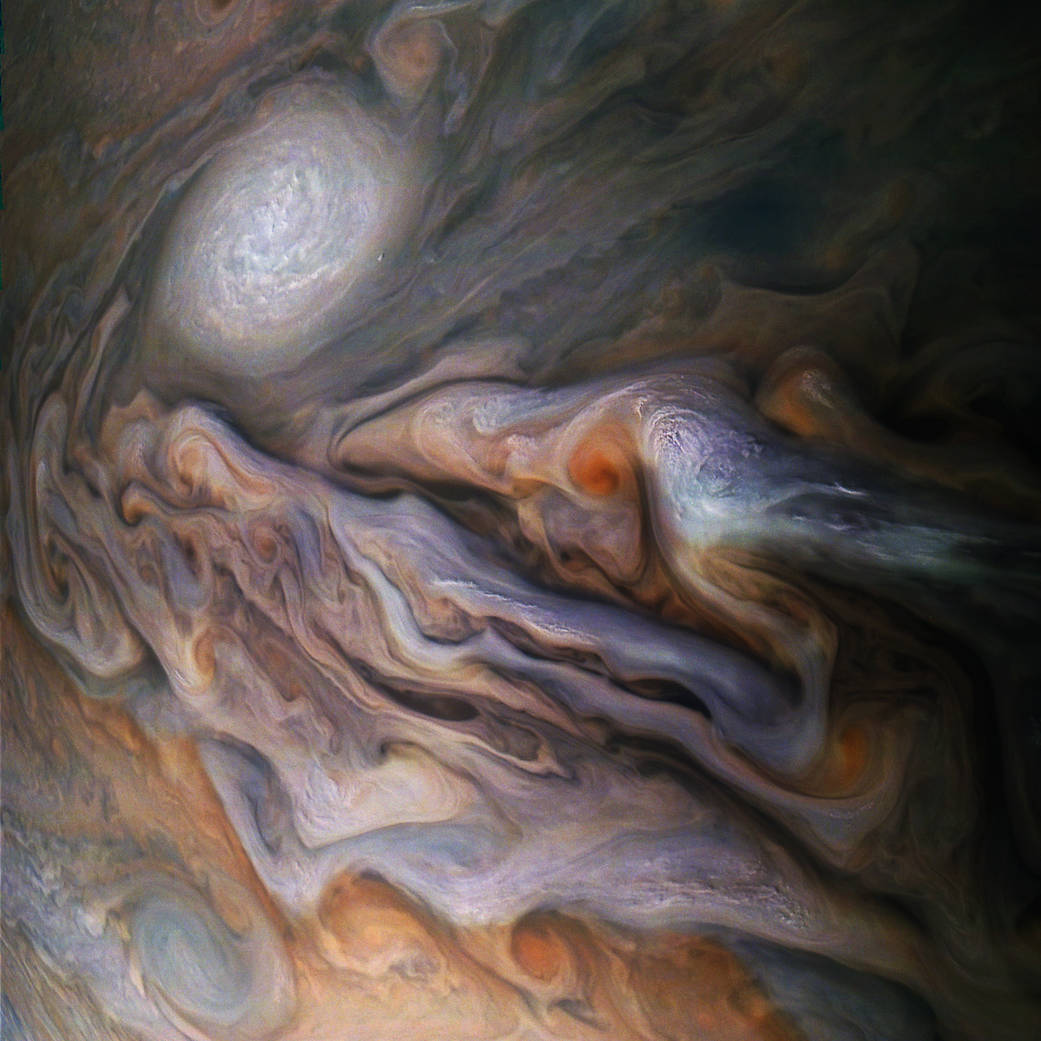
Confucius said, “Everything has beauty, but not everyone sees it.”
When it comes to Jupiter, Gerald Eichstädt and Seán Doran can certainly see it. And lucky for us, they have the skill to bring that beauty to the fore for the rest of us to enjoy.
Continue reading “Another Beautiful Image of Jupiter from Juno During a Flyby. Great Work by Gerald Eichstadt and Sean Doran”The Latest Insanely Beautiful Image of Jupiter Captured by Juno
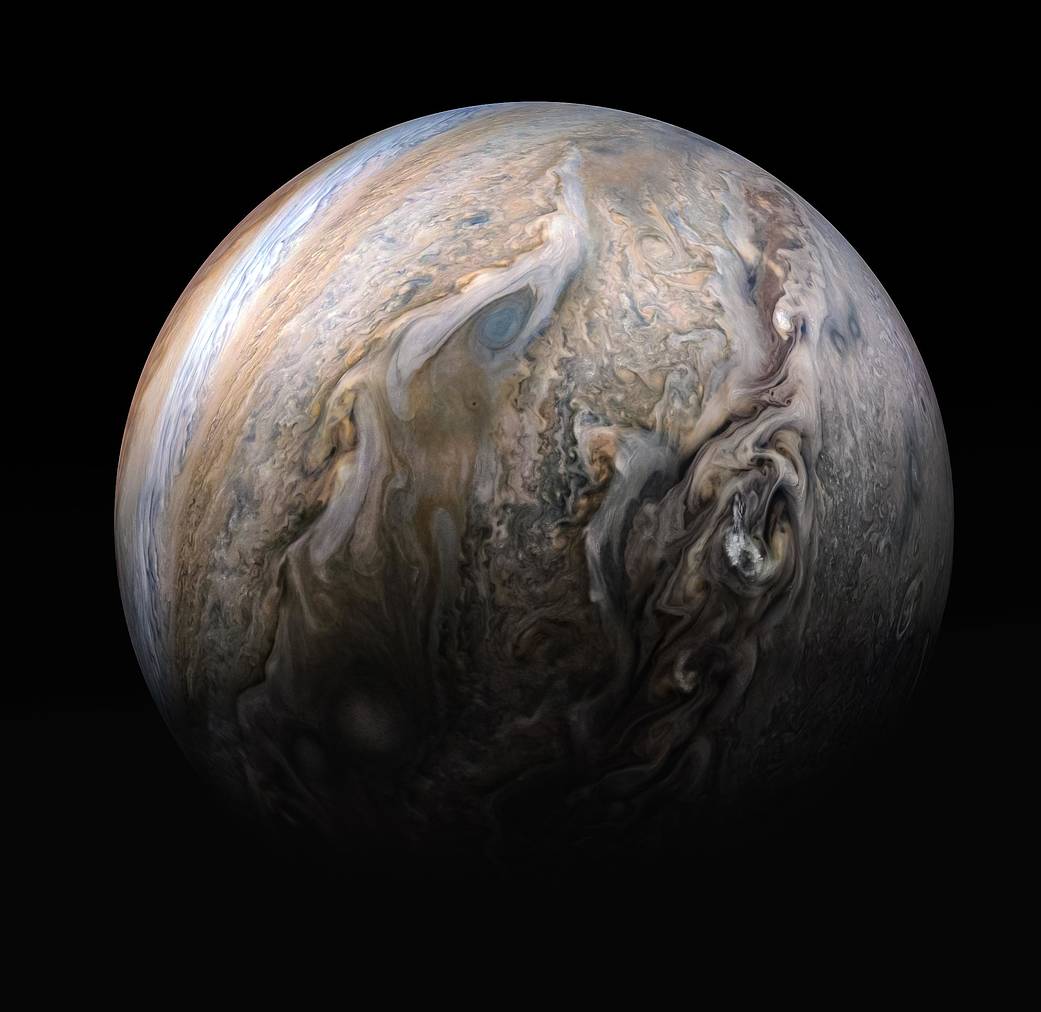
There’s something about Jupiter that mesmerizes those who gaze at it. It’s intricate, dazzling clouds are a visual representation of the laws of nature that’s hard to turn away from. And even though the Juno spacecraft has been at Jupiter for almost three years now, and has delivered thousands of images of the gas giant’s colourful, churning clouds, we can’t seem to satisfy our appetite.
Continue reading “The Latest Insanely Beautiful Image of Jupiter Captured by Juno”

